Re-establishing Global Equilibrium – One Community Weekly Progress Update #538
One Community is a global initiative focused on re-establishing global equilibrium through sustainable approaches to food, energy, housing, education, economics, social architecture, fulfilled living, and global stewardship practices. As an all-volunteer organization, our mission is to create a model that becomes self-replicating, enabling us to build a network of teacher/demonstration hubs worldwide. We believe in doing this for “The Highest Good of All,” which is why we are committed to open sourcing and free sharing the complete process. By evolving sustainability and fostering collaboration, we are actively regenerating our planet and creating a world that works for everyone.
- Here’s our project overview
- Here’s our world-change methodology
- Here’s how this becomes self-replicating
- Here’s how we are open source and free-sharing all the do-it-yourself designs
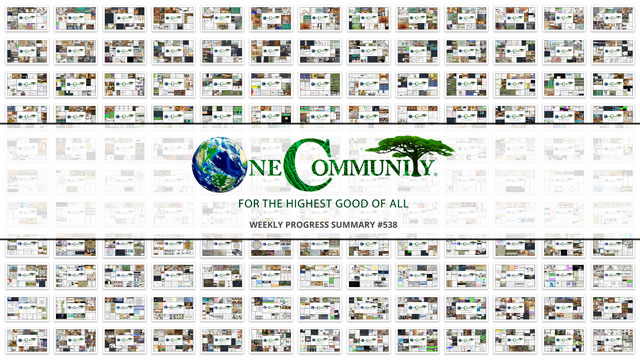
OUR MAIN OPEN SOURCE HUBS
Click on each icon to be taken to the corresponding Highest Good hub page.
One Community’s physical location will forward this movement as the first of many self-replicating teacher/demonstration communities, villages, and cities to be built around the world. This is the July 16th, 2023 edition (#538) of our weekly progress update detailing our team’s development and accomplishments:
Re-establishing Global Equilibrium
One Community Progress Update #538
DONATE | COLLABORATE | HELP WITH LARGE-SCALE FUNDING
CLICK HERE IF YOU’D LIKE TO RECEIVE AN EMAIL EACH WEEK WHEN WE RELEASE A NEW UPDATE
YOU CAN ALSO JOIN US THROUGH SOCIAL MEDIA
ONE COMMUNITY WEEKLY UPDATE DETAILS
HIGHEST GOOD HOUSING PROGRESS
 One Community is re-establishing global equilibrium through Highest Good housing that is artistic and beautiful, more affordable, more space efficient, lasts longer, DIY buildable, and constructed with healthy and sustainable materials:
One Community is re-establishing global equilibrium through Highest Good housing that is artistic and beautiful, more affordable, more space efficient, lasts longer, DIY buildable, and constructed with healthy and sustainable materials:
-
-
- Learn about: Our Upcoming Crowdfunding Campaign
- Learn about the different village models: 7 Sustainable Village Models
- Visit the open source portals for the first two: Earthbag Village OS Hub | Straw Bale Village OS Hub
-
This week, Amal Lazar (MS Mechanical Engineering) completed another week of assisting with the research for the Most Sustainable Lightbulbs and Light Bulb Companies: Research, Energy Savings, and More tutorial. Amal successfully completed the lightbulb task by finalizing the remaining activities. She focused on the consumer site segment, specifically addressing the incandescent and LED components, and sought out alternative options from benchmarking companies for the City Center project. Her efforts were aimed at identifying suitable alternatives that align with the project’s requirements and specifications. Below, you’ll find some images of this work.
Julia Meaney (Researcher and Assistant to Executive Director) completed another week of assisting with the team. This week, Julia worked on multiple projects. She focused on the “Net-zero Bathroom and Earthbag Village Water Collection and Septic Design” EDITED CONTENT FOR WEB” Google Doc, editing the remaining content to ensure proper grammar, spelling, and format suitable for the website. She also took the initiative to update links and images related to various products and sources. In addition, Julia dedicated time to the “DIY Earth Dam Design & Construction Disaster Mitigation Content” Google Doc, reviewing and editing the newly added content while addressing and resolving comments. Another task involved her thorough review of the “Hot Tub Sanitizer Alternatives” Google Doc, where she provided clarity on the placement of its content on the website and the appropriate formatting for integration. Julia also worked on the corresponding spreadsheet, updating colors and formatting to align with the master Hot Tub design spreadsheet. Moreover, she focused on the “Traditional Dome vs. City Center Dome Structural Engineering Loading Comparison Report” Google Doc, ensuring the content adhered to proper grammar conventions. Utilizing comments, she raised questions and offered valuable feedback when necessary. Furthermore, Julia undertook the responsibility of reviewing updates made to the “Murphy Bed Instructions” PDF, resolving comments where her feedback had been incorporated. Lastly, she dedicated her attention to Chuck’s work on the “Duplicable City Center Engineering” webpage, examining the integration of her comments from the corresponding Feedback PDF. Whenever required, she provided additional comments and feedback. To enhance clarity and logical formatting, Julia rectified spelling mistakes in the Table of Content title texts and made various edits throughout the webpage. See the images below that show some of this work.
DUPLICABLE CITY CENTER PROGRESS
 One Community is re-establishing global equilibrium through a Duplicable and Sustainable City Center that is LEED Platinum certified/Sustainable, can feed 200 people at a time, provide laundry for over 300 people, is beautiful, spacious, and saves resources, money, and space:
One Community is re-establishing global equilibrium through a Duplicable and Sustainable City Center that is LEED Platinum certified/Sustainable, can feed 200 people at a time, provide laundry for over 300 people, is beautiful, spacious, and saves resources, money, and space:
-
-
- Learn about this building and it’s function: Duplicable City Center Open Source Hub
-
This week, Charles Gooley (Web Designer) completed another week of assisting with web design. Charles focused on addressing feedback for the Solar Energy Microgrid Setup and Maintenance as well as the Duplicable City Center Engineering tutorial. For the Solar Energy page, he primarily dealt with correcting links to images and tables, ensuring that all relevant figures were linked to their respective spreadsheets. However, due to insufficient clarity in the source document for the Solar Microgrid Setup and Maintenance page, the intended links for many tables and figures remained unclear. Once these issues are resolved, the spreadsheet links will be implemented accordingly. Additionally, Charles worked on comments regarding the Duplicable City Center Engineering” page, where he removed italicization from the captions and replaced several equation images with text. The addressed comments require further review, with potential additional corrections to be made as necessary. The pictures below offer a visual representation of this work.
Julio Marín Bustillos (Mechanical Engineer) completed another week of assisting with the City Center Dome Hub Connector Engineering. This week, Julio proceeded with the design process for the remaining variations of hub connectors required for the second row. Recognizing the importance of conducting stress analysis to ensure the connectors can withstand the anticipated loads, Julio sought assistance from Yiwei. By the end of the week, Julio successfully completed several variations and aims to conclude work on the second row in the upcoming week. The pictures below provide a glimpse of this work.
Ranran Zhang (Architectural Designer) completed another week of assisting with the updated video for the Duplicable City Center internal and external walkthrough. This week, Ranran addressed the errors in the Lumion model, rectifying them promptly. In addition, she dedicated her efforts to incorporating video clips, meticulously selecting the most relevant views to show the library. Notably, Ranran strategically opted for an overhead angle, capturing the entirety of the entrance to the site and showcasing it in its entirety. To enhance realism, she further enhanced these views by incorporating figures, thereby augmenting the overall visual experience. Take a look at the images below to see some of the progress made in this work.
Amiti Singh (Architectural Designer) focused on the design and modeling of a visitor room within the Duplicable City Center, specifically emphasizing a theme centered on tranquility. The objective was to create a space that exudes a sense of meditative calmness through the utilization of “softness.” This concept was achieved by incorporating soft edges, a subdued color palette, and simple furniture, along with cloth canopies, a spa-like bathroom, and floor seating arrangements. Amiti took charge of the SketchUp modeling process of the room, diligently gathering references and selecting appropriate colors and materials to bring the envisioned design to life.
YiweiHe (MechanicalEngineer) completed another week of assisting City Center Dome Hub Connector Engineering. This week, Yiwei completed a report comparing the traditional geodesic dome model with the city center dome model. The report focused on analyzing vertical loads, wind loads, snow loads, and earthquake situations through simulations. The findings indicated that the load capacity of the city center dome exceeded that of the traditional dome. See some of this work in the pictures below.
HIGHEST GOOD FOOD PROGRESS
 One Community is re-establishing global equilibrium through Highest Good food that is more diverse, more nutritious, locally grown and sustainable, and part of our open source botanical garden model to support and share bio-diversity:
One Community is re-establishing global equilibrium through Highest Good food that is more diverse, more nutritious, locally grown and sustainable, and part of our open source botanical garden model to support and share bio-diversity:
-
-
- Learn about the structures: Hoop House Hub | Aquapini & Walipini Open Source Hub
- See what we’ll be growing: Gardens & Hoop Houses | Large-scale Structures | Food Forest | TA
-
This week the core team further reviewed the open-source designs. We re-familiarized and reviewed portions of the Food Infrastructure Rollout Doc. We added a veterinarian position to the ongoing list of Pioneers for the third round of Pioneers who will take up residency on our property. Additionally, we recommended food-grade HDPE #2 buckets for long-term food storage of bulk items. See the pictures below that are related to this.
The core team also undertook several tasks in relation to the work at hand Transition Food Self-sufficiency Plan. First, an extensive review was conducted on the PDF Source Recipes that had been submitted up until SWG Lunch#2. Subsequently, an interview was scheduled and carried out with Gregory, resulting in the decision to bring him on board to contribute to the HG Food project. Additionally, feedback was provided to Alyx, who expressed a desire to include her personal recipes in HG Food. See below for pictures related to this.
HIGHEST GOOD EDUCATION PROGRESS
 One Community is re-establishing global equilibrium through Highest Good education that is for all ages, applicable in any environment, adaptable to individual needs, far exceeds traditional education standards, and more fun for both the teachers and the students. This component of One Community is about 95% complete with only the Open Source School Licensing and Ultimate Classroom construction and assembly details remaining to be finished. We’ll report on the final two elements to be finished as we develop them.
One Community is re-establishing global equilibrium through Highest Good education that is for all ages, applicable in any environment, adaptable to individual needs, far exceeds traditional education standards, and more fun for both the teachers and the students. This component of One Community is about 95% complete with only the Open Source School Licensing and Ultimate Classroom construction and assembly details remaining to be finished. We’ll report on the final two elements to be finished as we develop them.
With over 8 years of work invested in the process, the sections below are all complete until we move onto the property and continue the development and open sourcing process with teachers and students – a development process that is built directly into the structure of the education program and everything else we’re creating too:
- Program Overview: Education Open Source Hub
- How the components work together: How to use the Education for Life Program
- Lesson Plans for Life – Lesson Plans How-to
- Foundations of Outstanding Leaders, Teachers, and Communicators
- Curriculum for Life
- Teaching Strategies for Life
- Learning Tools and Toys for Life
- Evaluation and Evolution
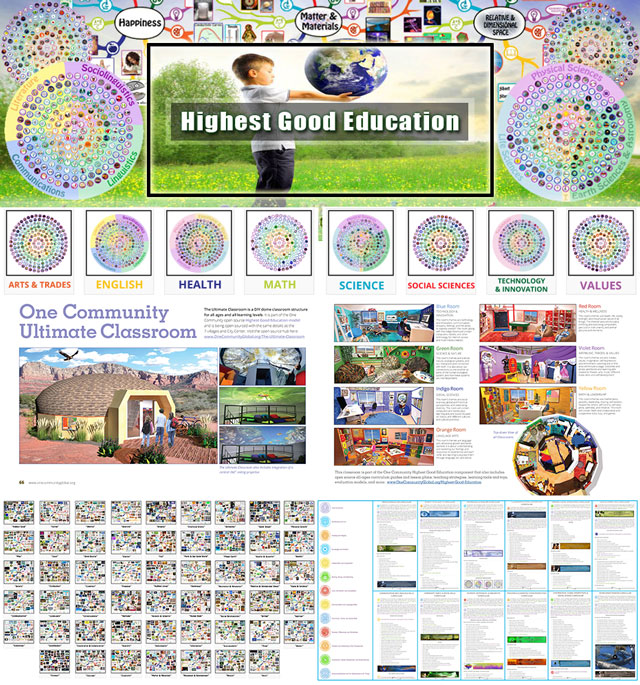
Highest Good Education: All Subjects | All Learning Levels | Any Age – Click image for the open source hub
HIGHEST GOOD SOCIETY PROGRESS
 One Community is re-establishing global equilibrium through a Highest Good society approach to living that is founded on fulfilled living, the study of meeting human needs, Community, and making a difference in the world:
One Community is re-establishing global equilibrium through a Highest Good society approach to living that is founded on fulfilled living, the study of meeting human needs, Community, and making a difference in the world:
-
-
- Read the Highest Good society overview: Highest Good Society
- Learn about the model for fulfilled living and sharing: A Day in the Life
- Learn about the 4 economic models: RBE | For-profit | Non-profit | Entrepreneurship
- Learn about our open source community collaboration and management software: The Highest Good Network
-
This week the core team completed 75 hours managing One Community volunteer-work review not included above, emails, social media accounts, web development, new bug identification and bug-fix integration for the Highest Good Network software, and interviewing and getting set up new volunteer team members. The pictures below show some of this work.
Another core team member began verification of all the modifications made to the working Highest Good Network software. They conducted HGN PRs testing; checked several PRs and marked them as fixed, including 757 (second part confirmed), 927, 960, and 925. However, PR 878 was not fixed, and they provided a list of missing areas with supporting images on pages 63-67. Additionally, they identified two PRs to be tested next week: PR359, which was reviewed again and found suitable for last week’s reporting date, and a case was set up to check PR757, which is related to making up the required hours missed the previous week. They also commented on all previously checked PRs in the “HGN Phase| Bugs and Needed Functionalities” Google Doc. See the images below for examples of this work in progress.
Abdelmounaim “Abdel” Lallouache (Software Developer) continued his work helping with the Highest Good Network software. This week, Abdelmounaim made several contributions to the project. On the backend, he implemented the “validateSetupToken” function in the “profileInitialSetupController” to handle token validation. Additionally, on the frontend, he made updates to the “routes” component by introducing a new route specifically for the initial setup. Furthermore, Abdel created the “SetupProfile” component, which serves the purpose of token validation and redirects the user to either “SetupProfileUserEntry” or “SetupProfileInvalidToken” based on the token’s validity. In order to facilitate the initial setup process, he also developed the “SetupProfileUserEntry” component, which consists of a form where users can enter their information. Lastly, Abdel implemented the “SetupProfileInvalidToken” component, which displays the page users are directed to when they attempt to access the setup with an invalid link. The pictures below are related to this work.
Aishwarya Kalkundrikar (Full Stack Software Developer) continued helping with the Highest Good Network software. This week, Aishwarya reviewed numerous files from both the backend and frontend systems, specifically focusing on the file WeeklySummary.jsx, which is associated with generating weekly summaries for users. She discovered several modifications had been made to this file, and suspects that these changes may be the cause of the issue at hand. Additionally, Aishwarya examined files related to the functionality of sending email notifications for infringements. The pictures below show some of her work.
Alyx Parr (Senior Support Specialist) completed another week of assisting with management, coordination, and overall support of the One Community project. This week, Alyx created collages of individuals’ pictures for the blog and reviewed tutorials on how to move the pictures into the blog. She transferred summaries for review and copied them to the blog. In addition, she dedicated time to transferring recipes from the Master Recipe Doc into the Transition Kitchen Recipe Build Out Spreadsheet. Alyx also spent time training Maddie and assisting Ola with her pictures. The pictures below are examples of this work.
Eduardo Horta (Software Engineer) provided more of his ongoing assistance with the Highest Good Network software too. This week, Eduardo worked on various tasks to improve the functionality and design of different pages. He began by adjusting the reports page for mobile devices and also started working on the people report feature. Eduardo focused on debugging responsiveness issues, particularly with scrollbars and overlapping classes. He faced challenges while trying to style the <PeopleDataTable /> component to enable horizontal overflow on mobile phones. In addition, he dedicated time to understanding the logic behind the overlapping style of elements and components on the people report page. Eduardo also initiated adjustments on the team report page, ensuring that the popper of the <DatePicker/> component was correctly placed to prevent it from appearing outside the screen. Furthermore, he created a media query to display Report Logs in a column format for devices with a maximum width of 1100px. Eduardo centralized the pie chart to ensure it appeared properly on mobile devices, but noted the need for further adjustments. He continued working on the Team Report Page and made modifications to elements such as the title and pie chart to enhance their appearance on mobile devices. The images presented below exemplify his work.
Edwin Estuardo Lau Mack (Software Engineer) continued developing the Highest Good Network software. This week, Edwin dedicated his efforts to advancing the development of the HGN application as a member of the Dev Team, with a primary focus on Frontend Functionality. Edwin successfully completed the pull request (PR) titled “Make Total Valid Weekly Summaries” number editable by Owner/Admin, ensuring that the up/down arrows were only visible to Admins/Owners. In addition, He undertook a new task named “Fix making time intangible to tangible doesn’t add progress.” During this task, he identified an issue where the new time entry, when transitioning between tangible and intangible, was not properly linked to the task model in the database, only to the time entry model. To address this, he made a backend request to extract all task properties and adjusted the hoursLogged property based on the user’s selection. Subsequently, heimplemented a request to update the task with the adjusted hoursLogged value, which was then used to update the progress bar. Finally, Edwin dedicated time to the deployment of the new timer, delving into the code to fix memory leak bugs and resolve the issue that caused the timer to restart after submitting a time entry. Images showing this progress are below.
Jianjun Luo (Software Engineer) continued developing the Highest Good Network software. This week, Jianjun focused on refining the total people report feature from the previous week. She successfully addressed the one day gap bug resulting from the timezone transformation and simplified the procedure for viewing different time ranges. In addition, Jianjun initiated the development of the total team report feature and completed the majority of its functionalities, encompassing the display of total numbers, a bar graph, and a detailed table. Currently, her efforts are directed towards enhancing the component’s performance. The pictures below are related to this work.
Jinchao Feng (Software Engineer) continued improving the Highest Good Network software. This week, Jinchao primarily focused on developing permissions for the visibility of the summary indicator and visibility icon. Additionally, he dedicated time to formatting the entire frontend repository using Prettier and ESLint. During this process, he successfully resolved several common errors, ensuring minimal impact on the existing codebase. Jinchao also made the decision to disable certain rules that were either deprecated or no longer aligned with the current code standards. Please refer to the pictures below.
Jonathan Carpena (Full Stack Developer) gave his continued support to the Highest Good Network software. This week, Jonathan started by addressing typos and adding a default value in his first pull request. Additionally, he joined the new timer team and was assigned the responsibility of completing a project that had been left unfinished by a previous team member. While working on this task, the team faced challenges related to memory leaks during state updates and encountered unavoidable front-end alerts and wrong status codes. Check out the following pictures for his work.
Kaixiang “Kevin” Gu (Fullstack Software Developer) focused on the Highest Good Network software. This week, Kaixiang further developed the obvious background for the bio announcement. He successfully implemented a function to fetch the total tangible hours and total days data from the backend, allowing the yellow bar to appear if the user meets both criteria. Additionally, Kaixiang completed the function to display the yellow bar based on the status of the toggle switch. However, there is a need for optimization in the loading speed of the component. Pictures below show some of this work-in-progress.
Kurtis Ivey (Full Stack Developer) further advanced the Highest Good Network software. This week, Kurtis was promoted to the development team and was assigned to the new timer team. He diligently investigated and resolved several bugs, including an issue with Azure not working due to a redefined port variable. Kurtis successfully implemented a fix for the undefined TypeError on the front end. Additionally, he identified a timer problem where it would auto restart after submitting a time entry, which he resolved by deleting prevLogModal and modifying the if statement to prevent automatic timer restart. However, Kurtis currently faces a challenge with a merge conflict and awaits assistance to address it. Despite this obstacle, he has demonstrated a focused and problem-solving approach throughout his work. The pictures below are examples of this work.
Lawrence Chua (Full Stack Software Developer) further assisted with the Highest Good Network software. This week, Lawrence diligently re-reviewed backend PR #366 and confirmed that all the requested changes had been implemented satisfactorily. As the PR was functioning as intended, he proceeded to approve it. Additionally, Lawrence dedicated time and effort to resolving a bug associated with name changes for assigned resources when adding a task. Initially, he had devised a frontend solution; however, upon further examination, he determined it to be a temporary fix. With a focus on achieving a more robust resolution, he delved into the backend and identified a superior solution. After completing the task, Lawrence submitted a new pull request, which is currently awaiting review. See the images below to get a look at some of this work.
Leon Zhuang (Software Engineer) continued helping with the Highest Good Network software. This week, Leon dedicated his efforts to advancing the development of the interactive map. As part of this endeavor, he focused on implementing the logic required to retrieve data of all users from the backend. During this process, Leon made a minor adjustment to the backend code to enhance its functionality. Additionally, he delved into the exploration of integrating Leaflet, an interactive map library, with React. Through his diligent efforts, Leon successfully accomplished the task of setting up a basic working map using Leaflet. His work by him is shown below.
Lucile Tronczyk (Full Stack Software Developer) continued developing the Highest Good Network software. This week, Lucile undertook several tasks to advance her work. Firstly, she diligently prepared a first draft of the information points by utilizing a Google Doc. In order to ensure accuracy and adherence to the project requirements, Lucile referred to the relevant sections in the bugs and features document while navigating through the application. Additionally, she carefully examined the existing handling of information points and engaged in a discussion with a fellow team member responsible for making these points editable. Lucile’s proactive approach and collaborative mindset contributed to the progress made during the week. The pictures below relate to this.
Madhavan (Administrative Assistant) completed another week of assisting as a volunteer graphic designer helping with graphic design projects for all of One Community. This week, Madhavan joined the organization and underwent initial orientation, acquiring knowledge of collaging through the use of Fotojet and GIMP. Additionally, he familiarized themselves with the entire process and functionality of WordPress. Interactive meetings with colleague Alyx were held, during which he followed the instructions provided. The team warmly welcomed Madhavan, who quickly learned how to utilize CHAPTGPT and carry out tasks as an administrative assistant. For practice, dummy summaries were reviewed, with feedback provided by Jae and Alyx.
Nathan Hoffman (Software Engineer) continued improving the Highest Good Network software. This week, Nathan focused on optimizing code and resolving bugs in the project. He moved the hasPermission() calls outside of the render method, simplified the calls by utilizing Redux, and removed unnecessary variables. Nathan successfully merged PRs 931 and 416 with the development branches. While addressing small bugs that arose from the merge, he also identified an issue where testing was utilizing the wrong Redux store for hasPermission(). The pictures below show some of this work.
Nida Zaki (Software Engineer) further assisted with the Highest Good Network software. This week, Nida reviewed pull requests on both the frontend and the backend, and successfully identified the specific component responsible for a particular issue. She proceeded to implement a solution to rectify a bug that involved rendering a user inactive and editing their blue squares, which entailed removing duplicate useEffect hooks that were triggered by identical function calls. Additionally, she skillfully resolved merge conflicts on a specific branch. Moreover, she developed a functionality allowing only three designated accounts to possess the permissions necessary for editing, updating, and resetting the password of the “[email protected]” account. Lastly, Nida made changes to restrict the ability to modify details of the DevAdmin account exclusively to Jae. The pictures below are examples of this work.
Papia Sharmin (Full Stack Developer) continued working on the Highest Good Network software. This week, Papia focused on implementing an important feature on the dashboard: the addition of a suggestion icon. To enhance user experience, a select input was incorporated to enable users to choose a category for their suggestions. Once a category is selected, a corresponding text input field dynamically appears, allowing users to write their suggestions. Moreover, a radio input was introduced to give users the option to request feedback on their suggestions. In addition, Papia made significant enhancements to the owner class. Two edit buttons were added, enabling the owner to expand the functionality of the suggestions dropdown. The first button allows for the addition of new categories to the dropdown menu, while the second button facilitates the inclusion of new text input fields. Throughout the implementation process, all necessary functionality was integrated into both the frontend and backend components, ensuring a seamless user experience. Below are some images related to this work.
Ray Lee (Digital Creator) also helped create an additional new icon for the Highest Good Network and a new header for our People’s Agenda 21 – www.peoplesagenda21.com website. See below for some of the pictures.
Sav Costabile (Web Developer) continued helping with the Highest Good Network software. This week, Sav addressed an app issue related to the badges component, which was a known problem among developers. The issue involved a delay between the front end and backend when users received new badges, resulting in the profile and dashboard pages not updating immediately. Through comprehensive testing, Sav determined that badges were being assigned and received correctly from the backend. However, the delay was attributed to the front end only retrieving badge data during its initial rendering. To resolve this, Sav initiated testing of a MongoDB function called changeStream, which is expected to enable real-time front-end updates whenever there are changes in the backend data. The pictures below relate to this work.
“Sola” Olusola Akinbode (Full Stack Software Developer) continued forwarding with the Highest Good Network software. This week, Sola made significant progress on PR 838 by implementing modifications to the Summary Team Tab located under the “profile” section, rendering it a read-only feature. As a result, all users, regardless of their role, can now access and view the summary team they are affiliated with. Additionally, he successfully integrated a new functionality that enables administrators and summary receivers to conveniently review the reports of individuals within their respective summary teams directly from the summary management page. For further details and a visual demonstration of this feature, please refer to the video accessible on Dropbox. Moving forward, Sola has identified three tasks that remain to do. These tasks involve the verification and development of an email function responsible for delivering reports to summary viewers, the implementation of permissions management to regulate report viewing within the browser, and conducting comprehensive testing and code cleanup to ensure optimal performance. Look below for pictures of this work.
Stevie Acuña (Volunteer Graphic Designer) completed another week of assisting as a volunteer graphic designer helping with graphic design projects for all of One Community. This week, Stevie focused on creating blog images for social media and YouTube posts, ensuring visually appealing content for the organization’s online platforms. Stevie also dedicated time to generating numerous volunteer announcements and developing supplementary web content, contributing to the effective communication of volunteer opportunities. Furthermore, Stevie reviewed and incorporated new volunteer background imagery into the volunteer announcement template, enhancing the visual presentation. Examples of his work are below.
Vishvesh Sheoran (Artificial Intelligence Specialist) continued assisting with the AI and machine learning improvements for all of One Community. This week, Vishvesh dedicated time to learning the intricacies of SEO by setting up the RankMath plugin for the One Community website. He delved into the features and functionalities of RankMath, focusing on optimizing on-page elements, meta tags, and keywords. His commitment to understanding and implementing effective SEO practices highlights his pursuit of enhancing website visibility and search engine rankings. See the pictures below showing his efforts by him.
Xiao Wang (Software Engineer) continued helping with the Highest Good Network software. This week, Xiao Wang focused on enhancing the logic of the WBS task system. Previously, all tasks were included and styled using style.display, which involved a significant amount of DOM manipulation not recommended for React. Currently, in the frontend, the recursive nesting of the Task component is almost complete, with the addition and import of tasks functioning as intended. However, there are still some unresolved details, including the elimination of unwanted setTimeout and the implementation of task movement functionality, which Xiao aims to address with more appropriate code. One major challenge encountered was ensuring that react-tooltip displays correctly after all tasks are rendered, but despite considerable effort, a solution could not be achieved. As a temporary workaround, a button was implemented on the page to display the tooltip. During work on the backend, Xiao also identified flawed logic pertaining to the task system data, although no action has been taken on that yet. Additionally, Xiao has scheduled the exploration of using the WBS schema’s modification date property to detect database changes and notify users when attempting modifications, such as adding new tasks. See supporting images below.
Xiaoyu Chen (Software Engineer) continued helping with the Highest Good Network software. This week, Xiaoyu proficiently addressed and resolved a bug associated with PR951, specifically related to conflicts between the handleSave and handleMove functions. Following this, she undertook a strategic separation of the handleSave and autoclose functions. This approach involved the meticulous rewriting of the handleMoveSave function, an endeavor that greatly enhanced its readability. Moreover, she thoughtfully integrated a ‘Close this window’ feature in PR975, providing users with the opportunity to verify the accuracy of the moved summary before opting to close the window through a simple button click. In response to Jae’s requirements, Xiaoyu conducted two rigorous tests focused on the Timer and Summary components, the objective being to uncover any potential bugs. Her keen attention to detail led to the discovery that updates to user class differences were not taking place when new roles and permissions were added. To rectify this, she skillfully rewrote the RoleInfoModal and incorporated a mouseover function, in addition to developing another mouseover function to facilitate owners in editing permissions for varying roles. Xiaoyu’s continued effort in enhancing user experience resulted in the addition of a scroll bar featuring a checklist in the editing mode, coupled with a submit button. Currently, she is diligently working on rectifying the handleSubmit function. Additionally, she effectively approved PR 881, ensuring that tangible time was accurately logged as intended. Please see evidence of this work below.
Yihan Liu (Software Engineer) continued development on the Highest Good Network software. This week, Yihan focused on addressing the issues related to the weekly summary submission date and the implementation of a “submit for review” button. Tatyana reported inaccuracies in the submission dates for the previous week and three weeks ago. She conducted a thorough analysis of the code and identified the dueDate property as a potential source of the problem. Taking prompt action, Yihan rectified the dueDate value and initiated PR#977 for review. Additionally, she commenced work on the “submit for review” button by creating the ReviewButton.jsx file and updating the TeamMemberTask.jsx file. Please look below for pictures of Yihan’s work.
Yiyun Tan (Management Dashboard Team Leader) continued improving the Highest Good Network software. This week, Yiyun devoted her time primarily to the “apply the ESLint and Formatter” plan, demonstrating her commitment to the project. She conducted extensive research on the GitHub Wikis, meticulously reviewing all existing documentation to gain a comprehensive understanding of the topic. Drawing upon her analysis, Yiyun formulated a detailed plan, carefully outlining the necessary updates required for specific files and identifying areas where new documentation needed to be created. Look below for connecting pictures.
Yongjian Pan (React.js/MongoDB Full Stack Software Developer) continued assisting with the Highest Good Network software. This week, Yongjian focused on improving the usability of the Work Breakdown Structure (WBS) by implementing a feature that allows users to directly access specific WBS pages by clicking on their respective names. However, during the implementation, issues arose as the corresponding pages became unresponsive when WBS names were clicked. Consequently, he dedicated time to debugging and identifying the underlying reasons behind the unresponsiveness. Additionally, Yongjian worked on the task of enhancing the login experience by implementing functionality that informs users if their account is no longer active. Through these endeavors, Yongjian demonstrated his commitment to improving user navigation and ensuring effective communication within the system. See the images below for a look at this work.
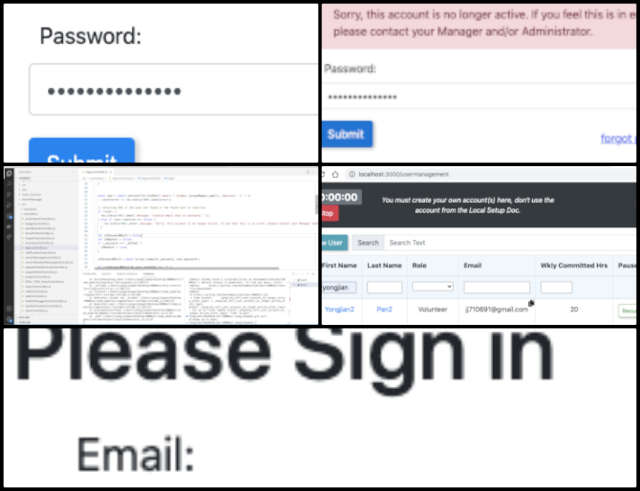
Yubo Sun (Full Stack Software Developer) focused on the Highest Good Network software. This week, Yubo addressed T149, which involves fixing the ability to add professional links. Given his’s usual work pattern, CSS styling and pull requests (PRs) are still pending, as the primary focus was on incorporating feedback from the previous week’s progress. While Yubo managed to resolve some of the identified issues, finding a solution for the problem of valid URLs remains unresolved, leading to encountering errors when attempting to remove additional saving. Additionally, he successfully resolved conflicts in the frontend PR#860. The pictures below relate to and show some of this work.
Yufei Zhang (Software Engineer) further assisted with the Highest Good Network software. This week, Yufei focused on developing an editable mouseover text feature for the owner user class. The primary challenge involved displaying the default mouseover text, storing the updated text, and ensuring its persistence. Yufei worked on the backend to build a mouseoverText controller and implemented the necessary routes and related components. To facilitate this feature, she added two new fields, “mouseoverText” and “isMouseoverTextEdited,” to the userProfile schema. Yufei also implemented a pre-save middleware to update the default mouseover text. Only users in the owner class can edit the mouseover text. Once the text has been manually edited, it will continue to display the owner’s changes until further updates by the owner, otherwise, the default mouseover text will automatically update based on the working hours. Please see below for pictures of this work.
Zubing Guo (Software Engineer) focused on the Highest Good Network software. This week, Zubing diligently continued her work on the task of incorporating “Admin Document” and “Link to Media Files” functionalities into the Profile page as part of the development team’s objectives. After successfully modifying the necessary code in UserLinks.jsx to display Dropbox links from the adminLinks section on user profiles, Zubing shifted her focus to EditLinkModal.jsx. With careful attention to detail, she implemented the necessary modifications to introduce labeled sections for both Google Docs and Dropbox Folders within the adminLinks section of the Links Layout. Furthermore, Zubing ensured the seamless retrieval and display of data in the designated areas. Throughout the process, she conducted thorough testing and subsequently submitted a well-prepared pull request. Despite encountering challenges that required additional time and effort, Zubing remained steadfastly committed to the successful completion of her task. Look below for pictures of her work by her.
The Highest Good Network software PR Review team also worked to test all of the above PRs and find any bugs they could within those PRs and the software as a whole. This week’s active members of this team (completing a minimum of 10 volunteer hours each) were: Aaron Persaud (Software Developer), Anish Pandita (Software Engineer), Bailey Mejia (Software Engineer), Carl Bebli (Software Developer), Hector Agudelo-Carmona (Front-end Developer), Igor Rocha da Silva (FullStack Developer), Jiangwei Shi (Full Stack Engineer), Luis Arevalo (Front End Developer), Maham Almizan Khan (Software Engineer), Olga Yudkin (Software Engineer), Ramya Ramasamy (Full Stack Developer), Shivansh Sharma (Software Developer), Siddharth Mohite (Software Engineer), Tim Kent (Full Stack Software Engineer), Tzu-Ning “Leo” Chueh (Software Engineer), and Yao Wang (Software Engineer). The collage below shows a compilation of the work from this team.
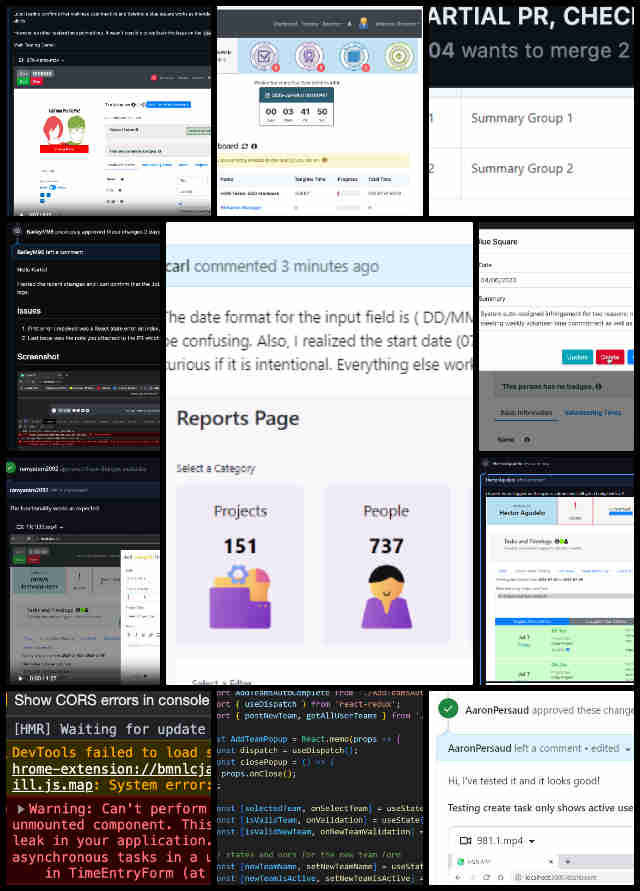
AND WE PRODUCED THIS WEEKLY UPDATES BLOG – CLICK HERE TO SUBSCRIBE
FOLLOW ONE COMMUNITY’S PROGRESS (click icons for our pages)
INVESTOR PAGES
GET INVOLVED
DONATE ● WAYS ANYONE CAN HELP ● MEMBERSHIP
CLICK HERE FOR ALL PAST UPDATES
 One Community
One Community


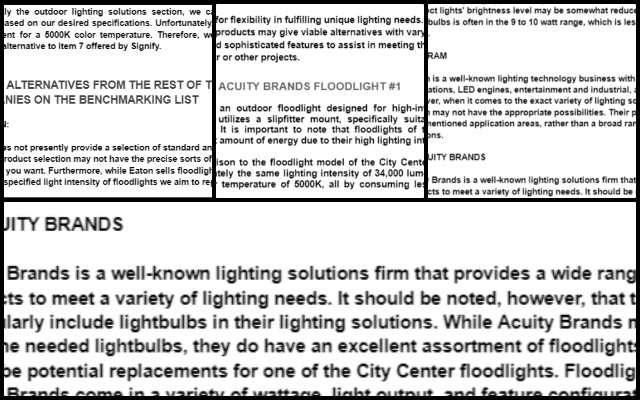
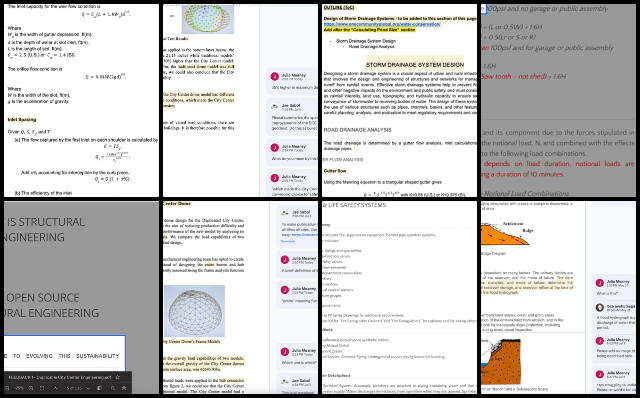
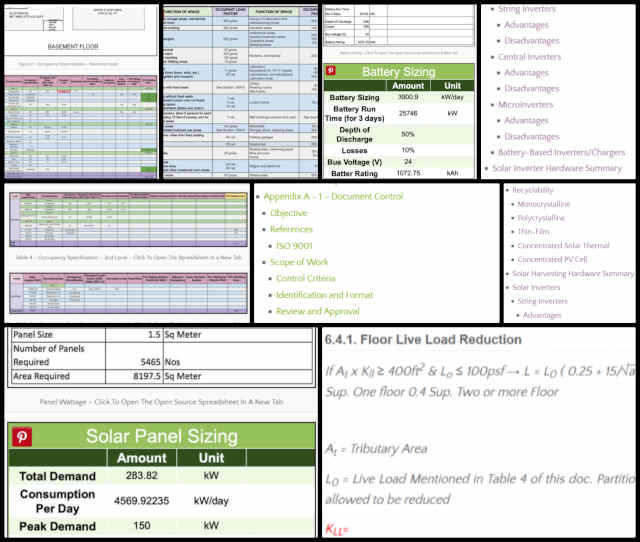
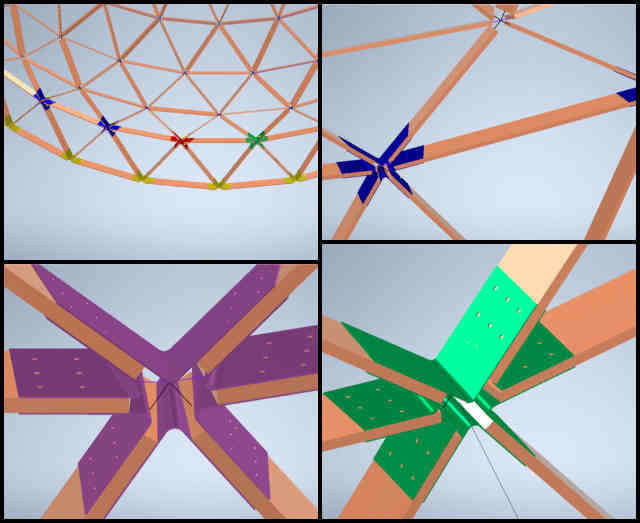
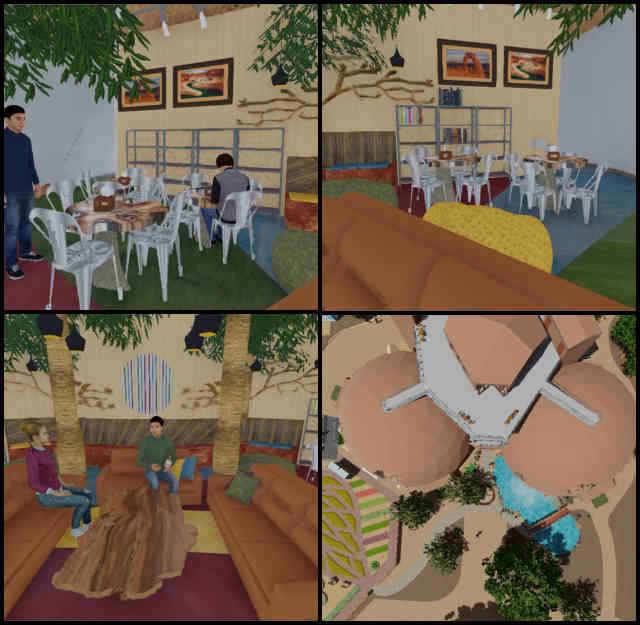
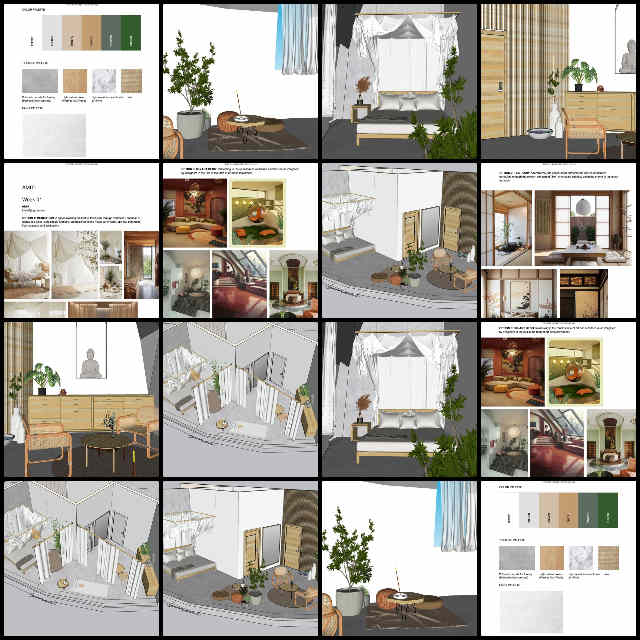
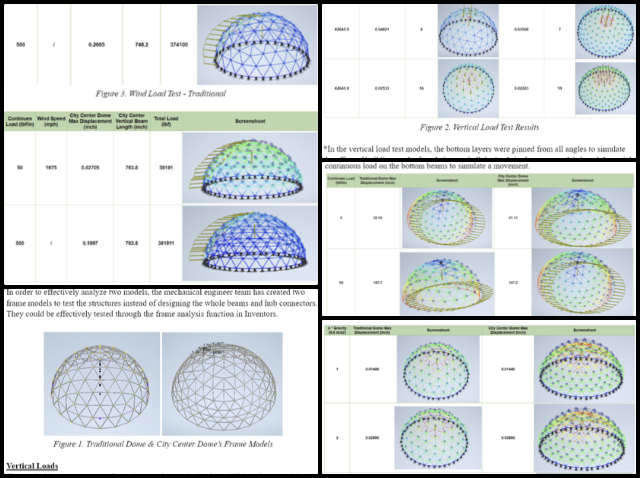
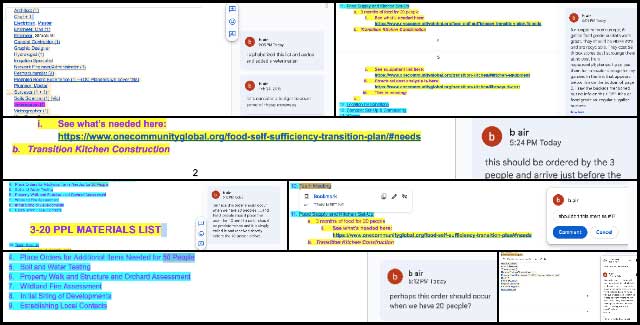
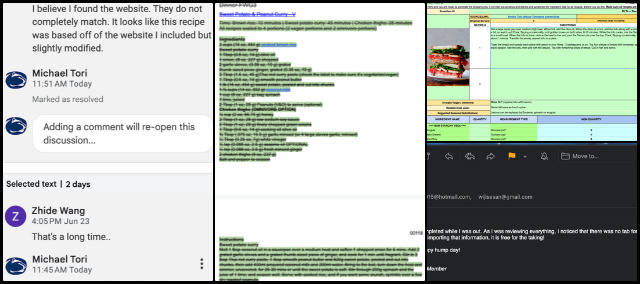
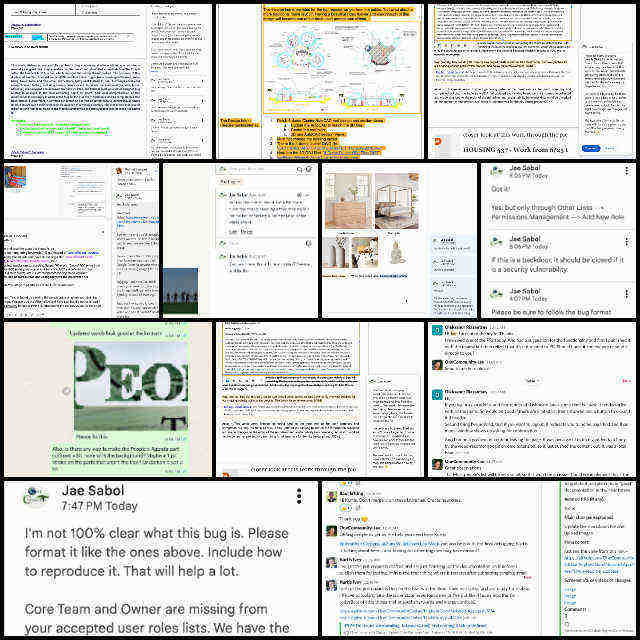

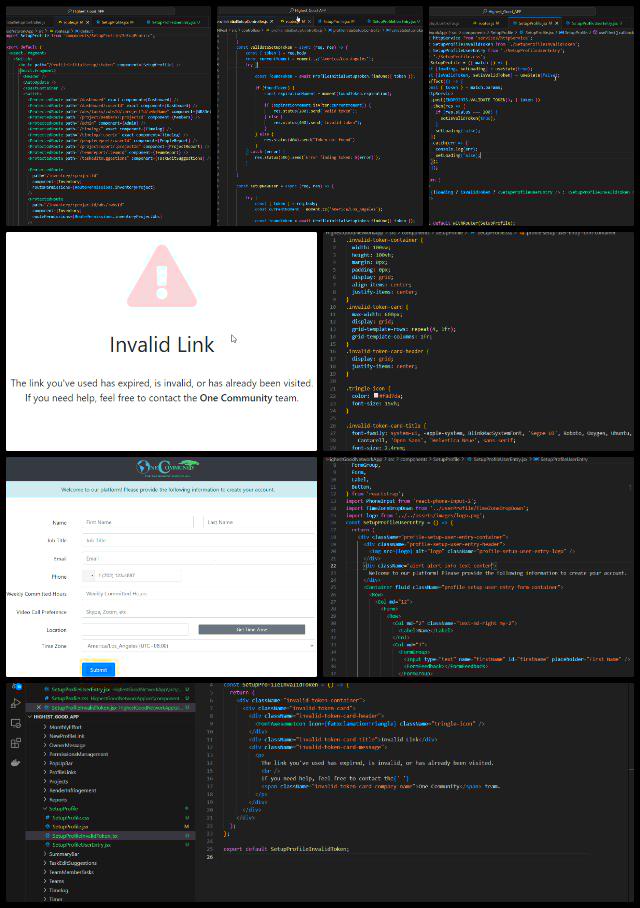
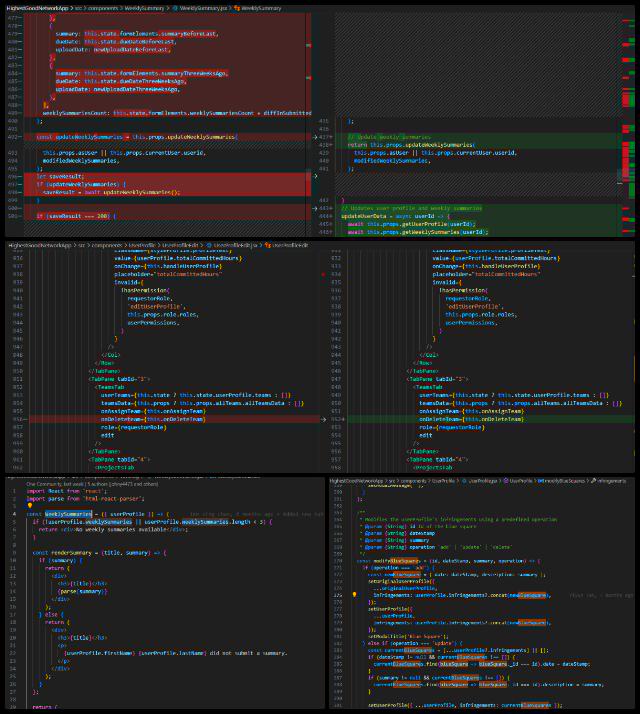
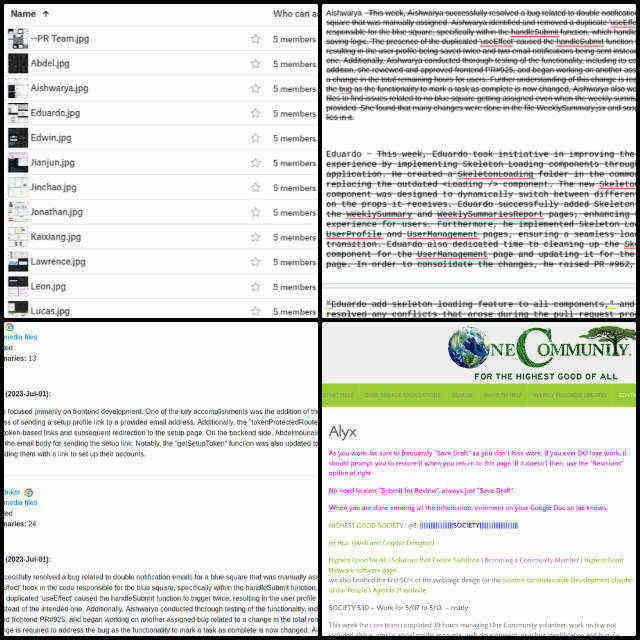
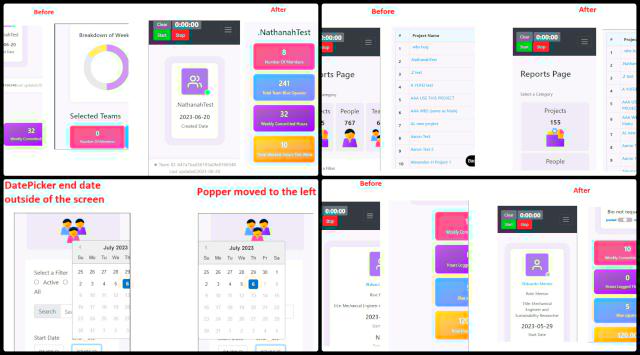
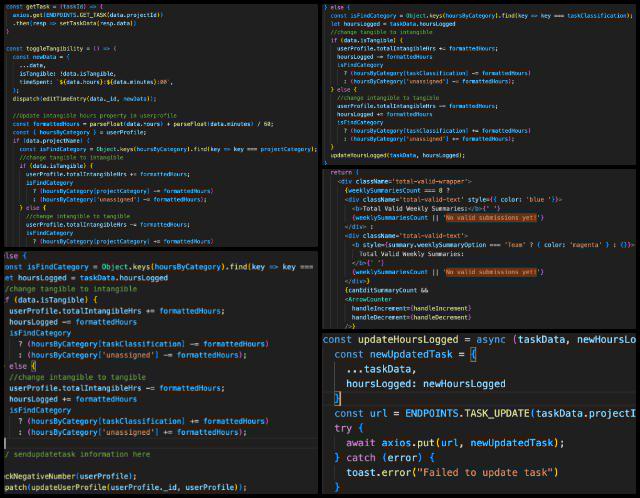
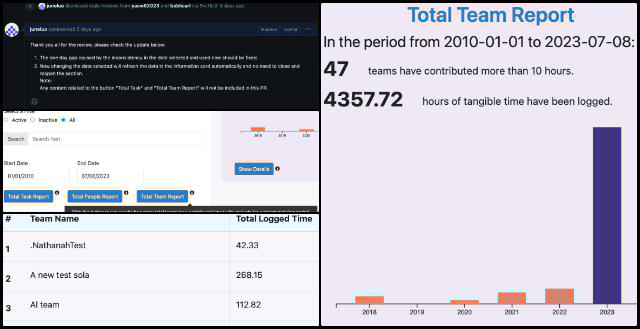
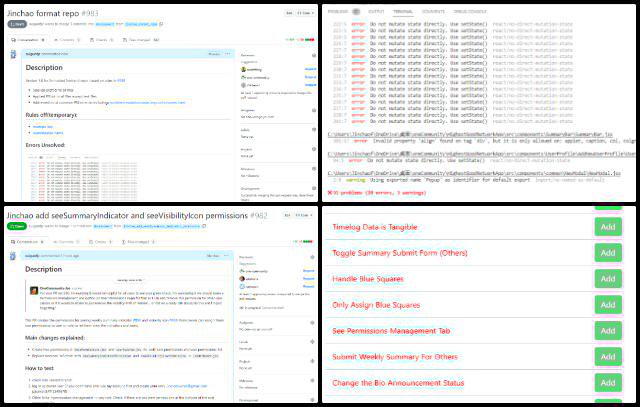
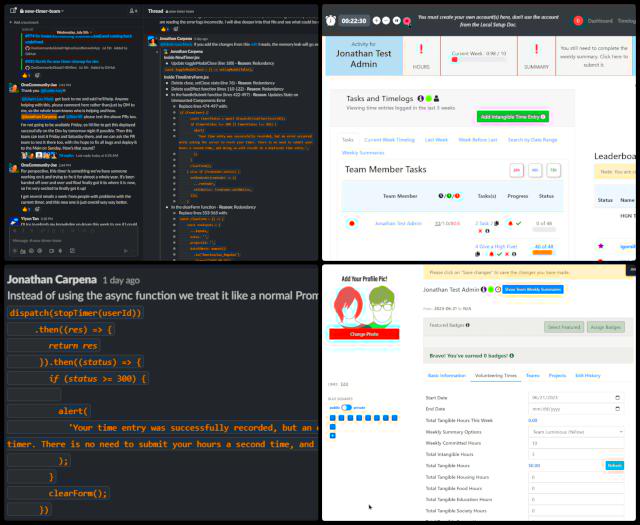
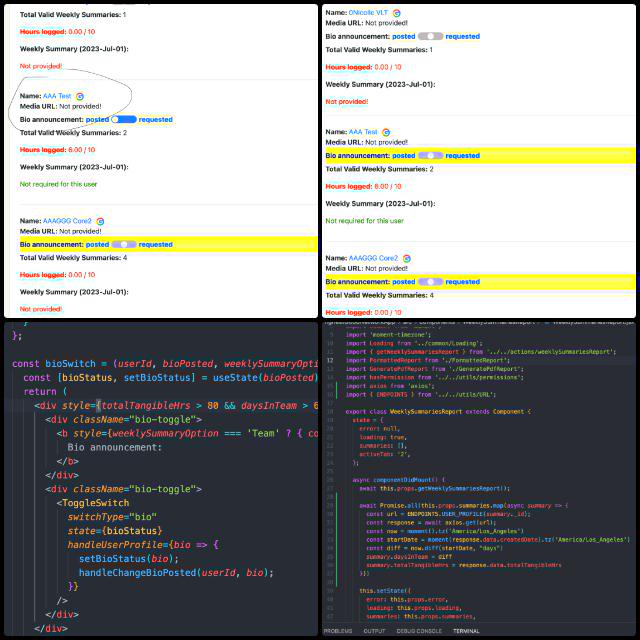
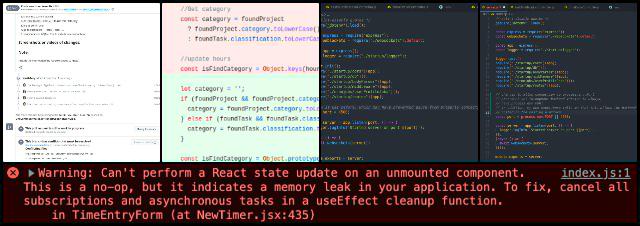
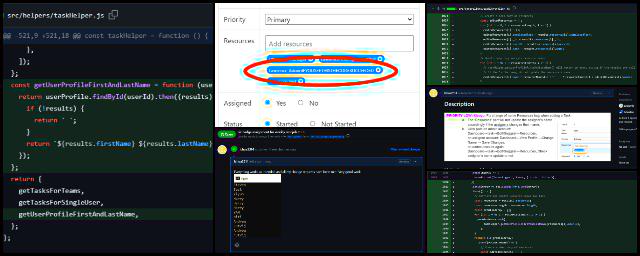
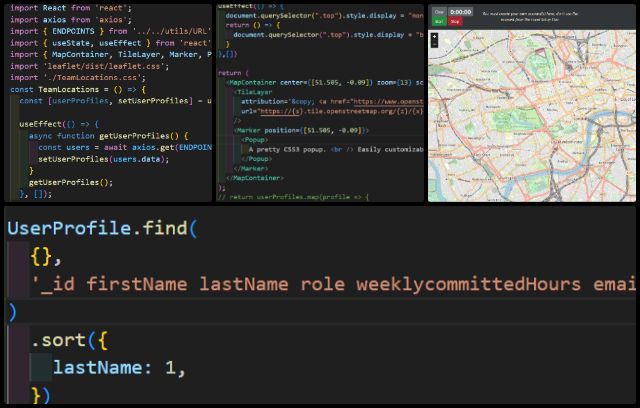
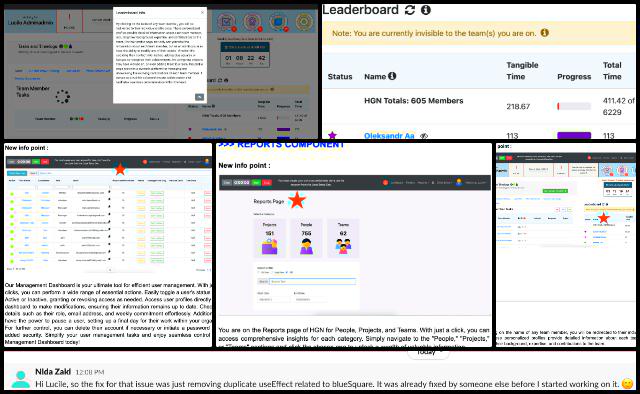
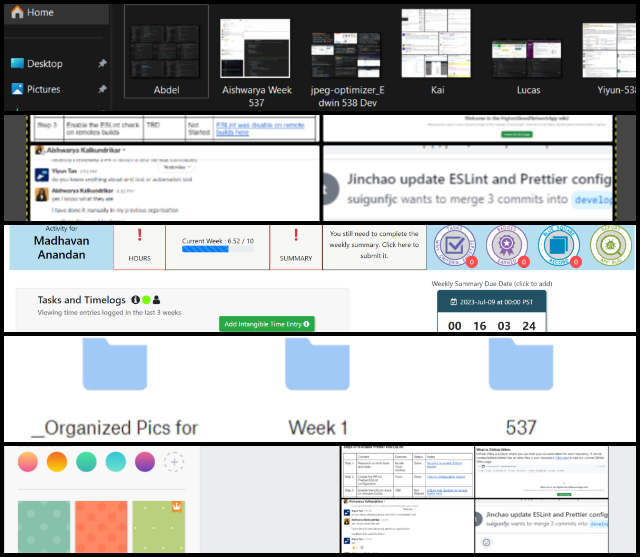
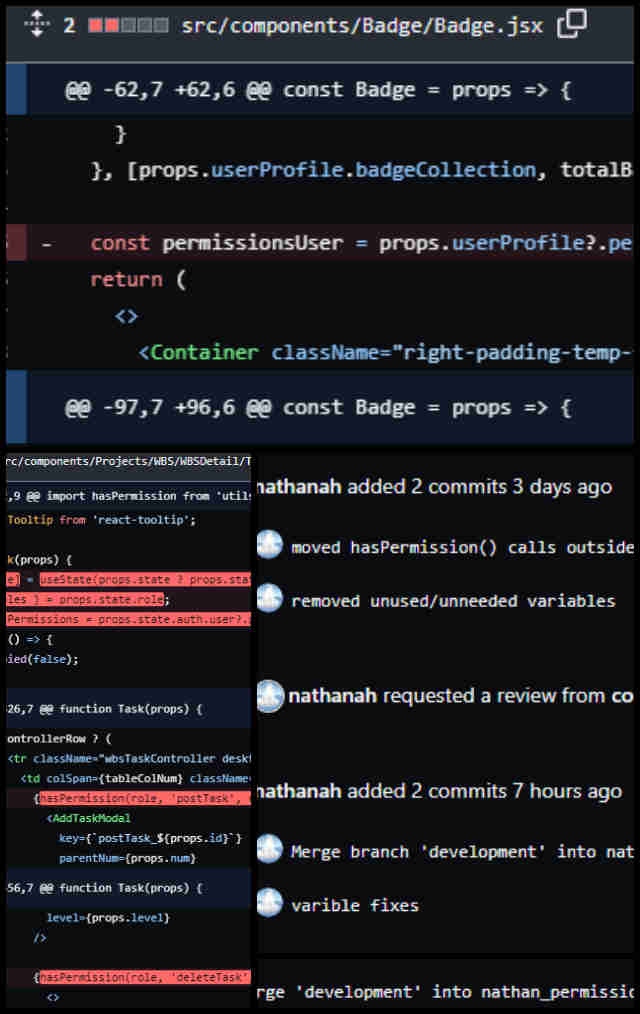
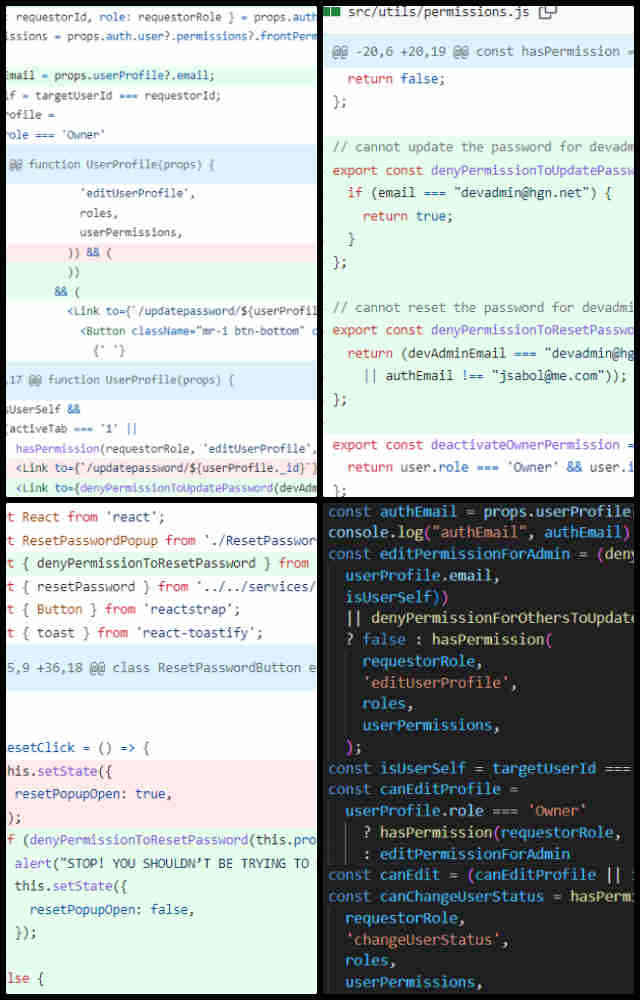
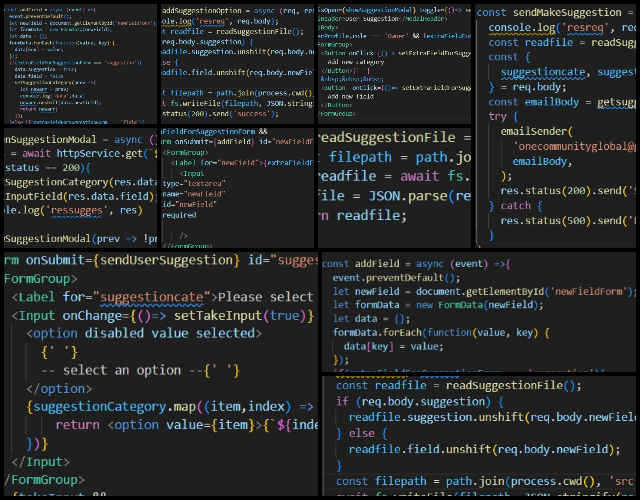
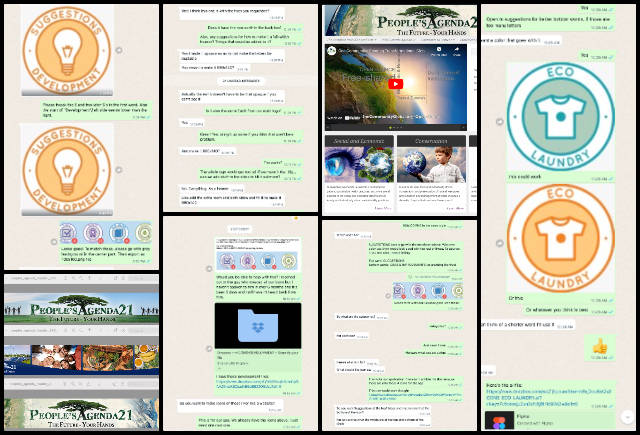
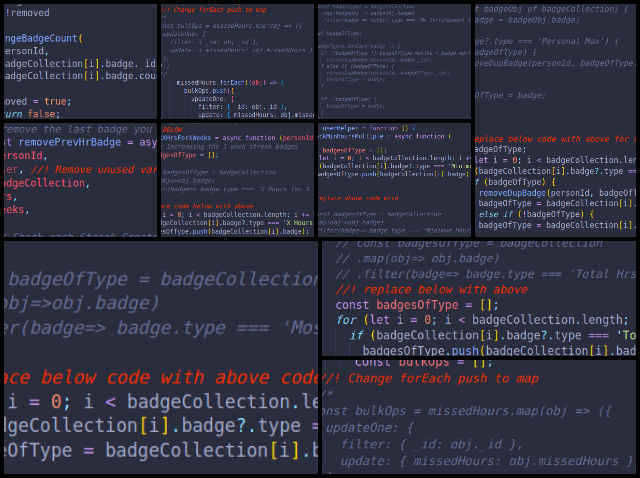
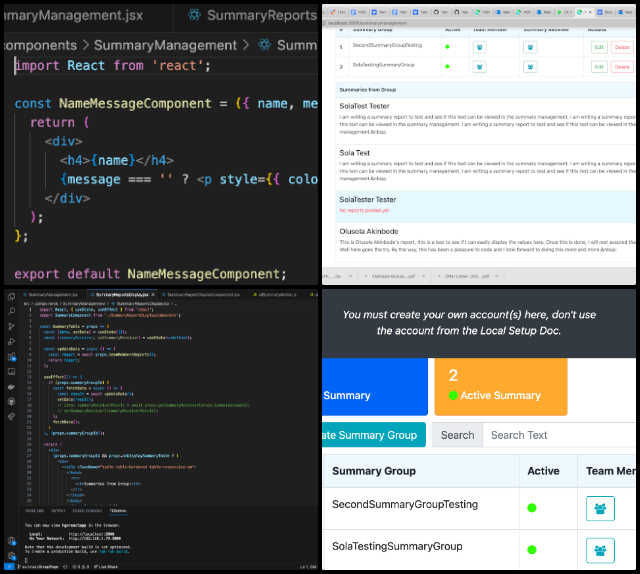
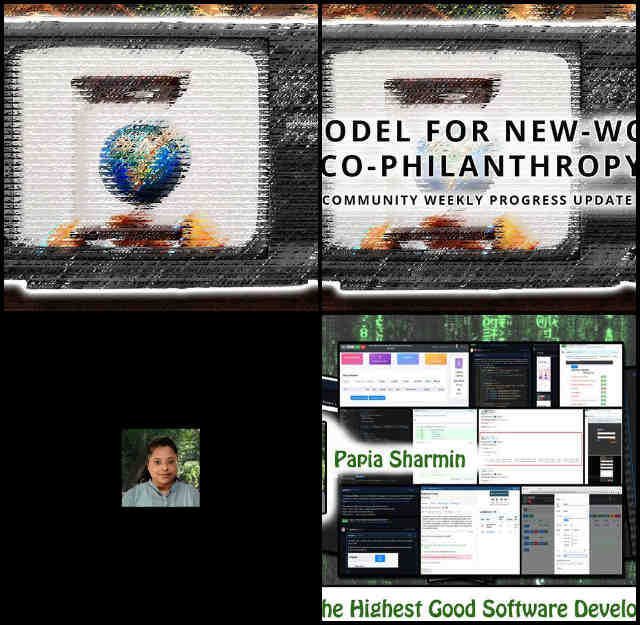
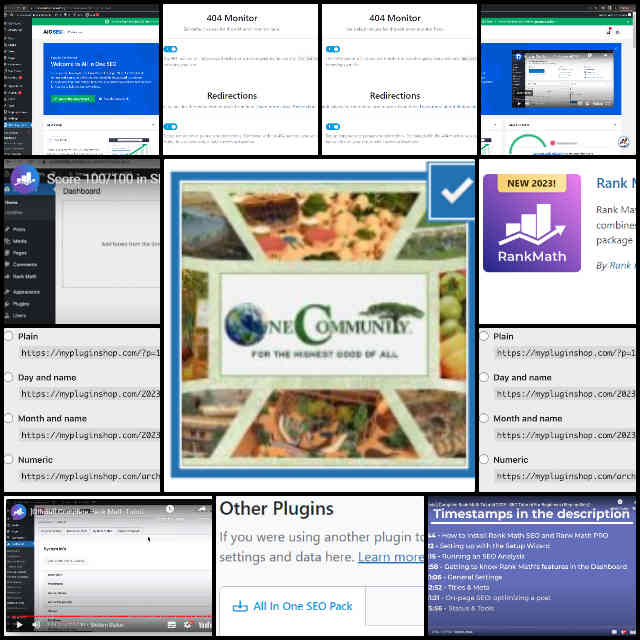
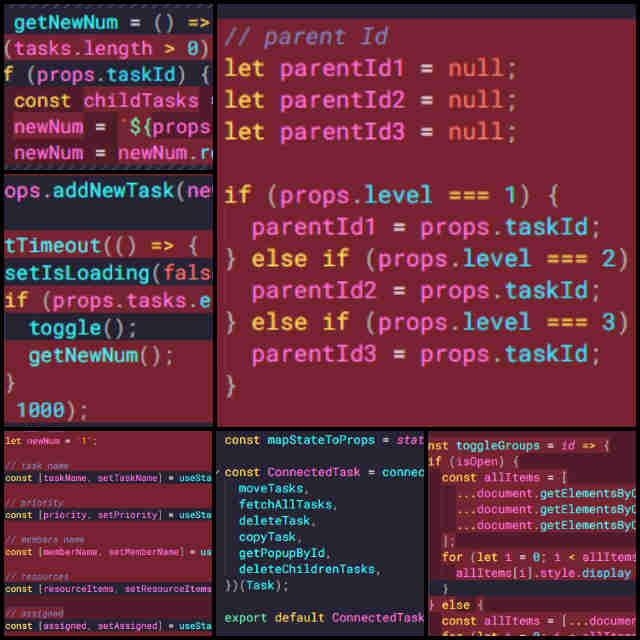
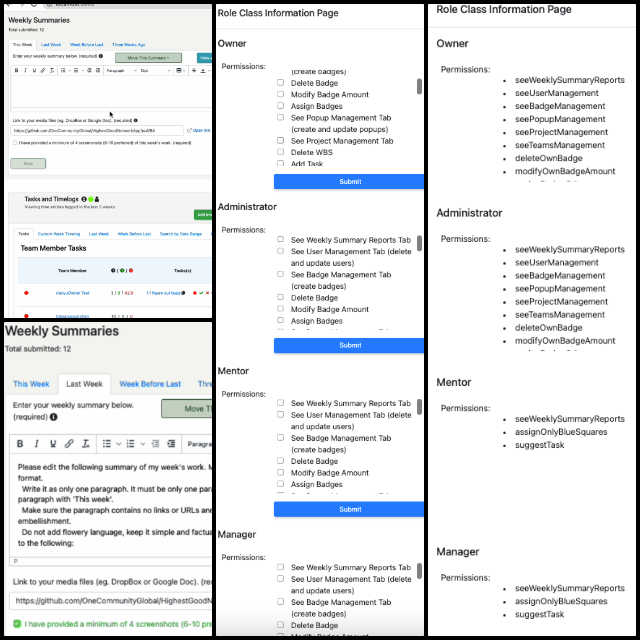
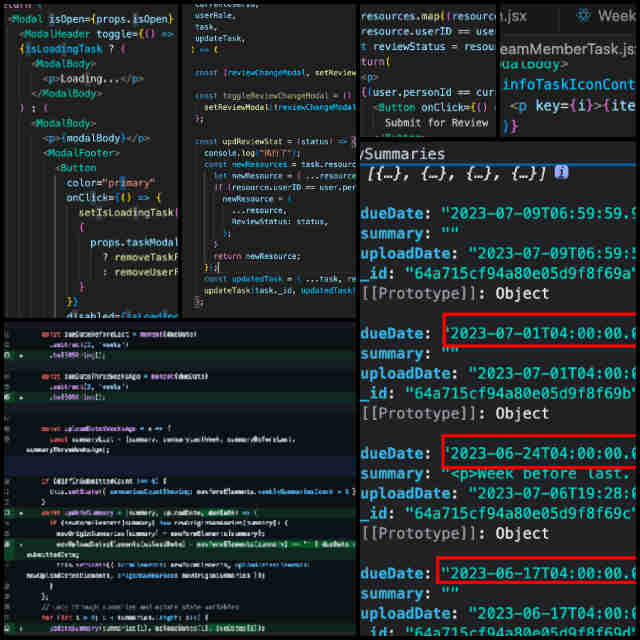
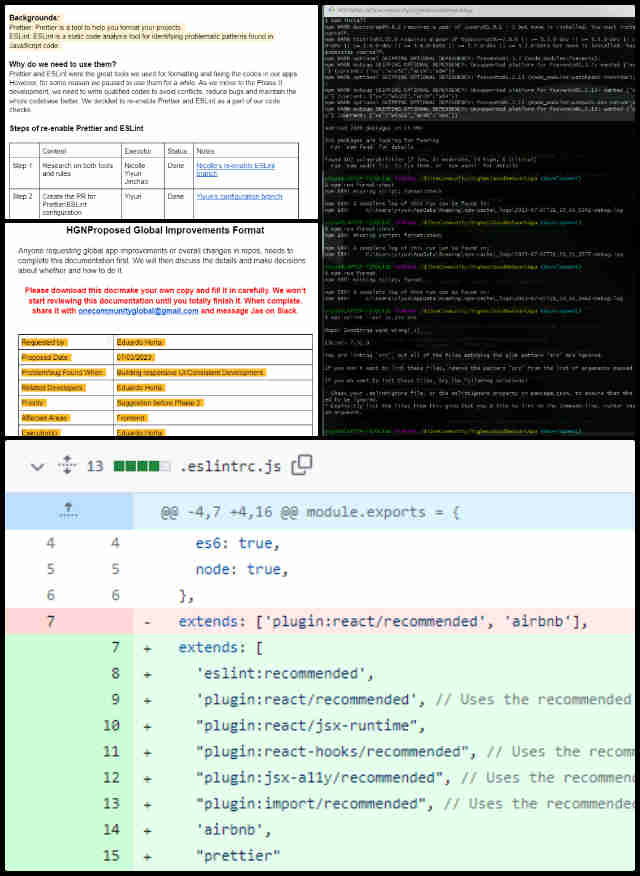
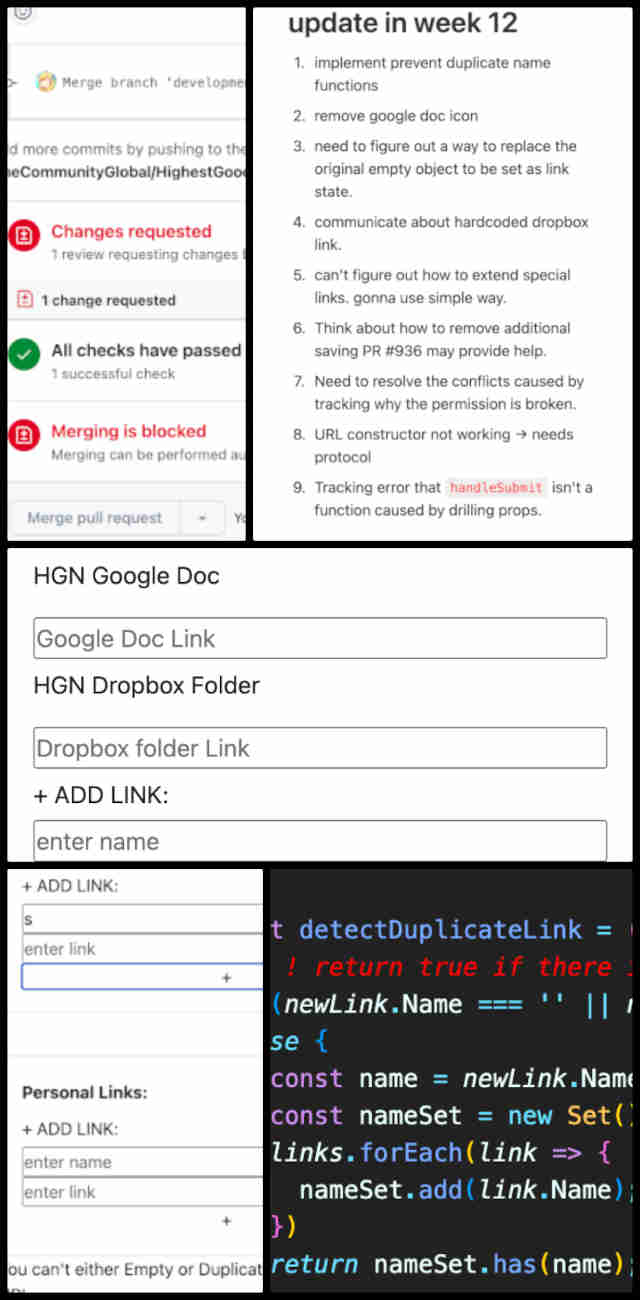
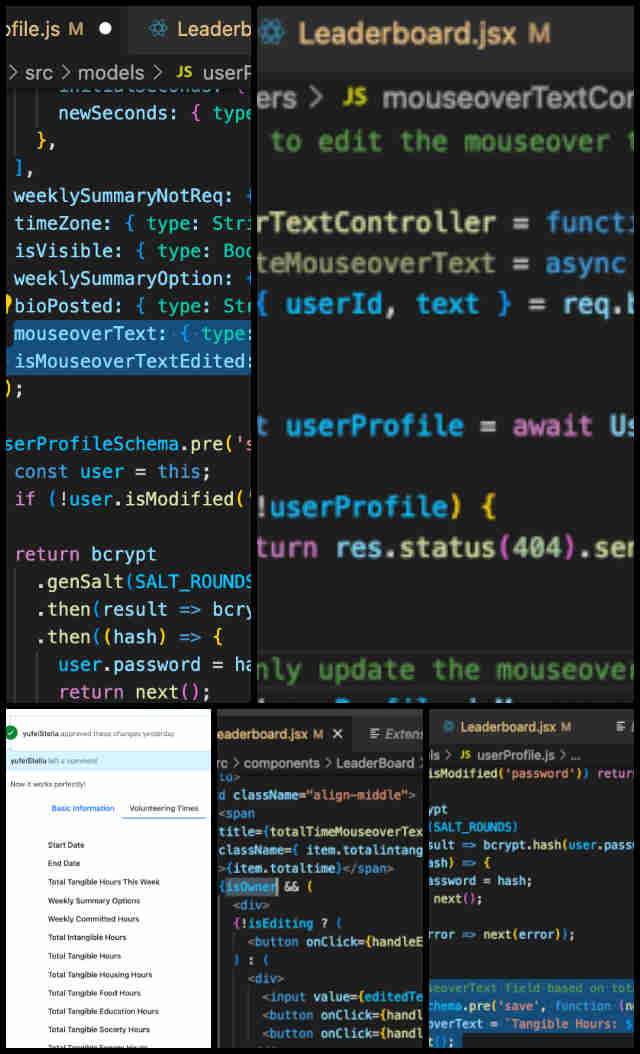
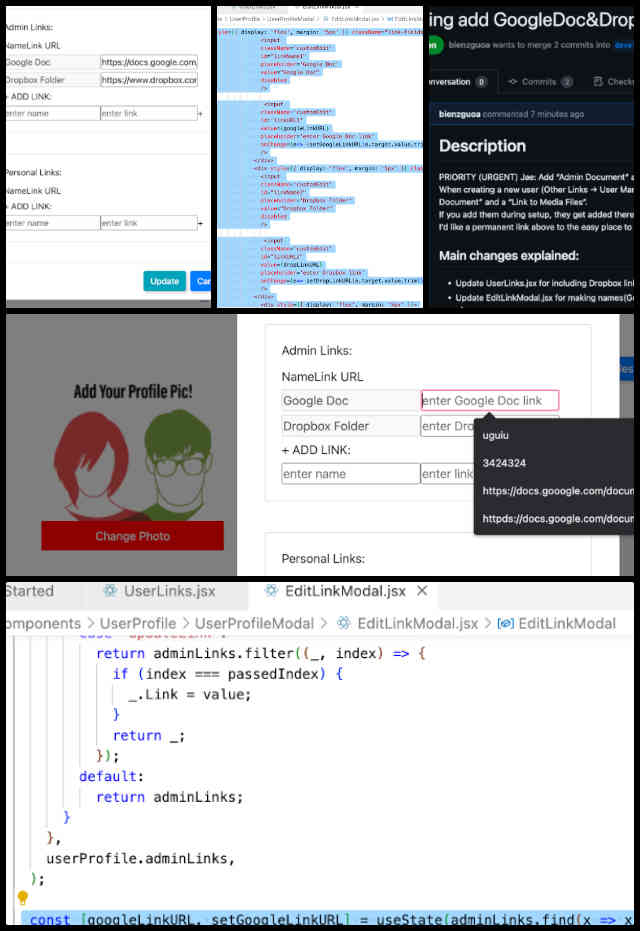



Connect with One Community